What is tooth filling? Dental filling is a method to address issues related to tooth damage, helping protect teeth from bacterial invasion and harmful chemicals without adversely affecting tooth enamel. However, when is tooth filling necessary? To determine whether tooth filling is needed or not, you should seek advice from Bedental dental professionals through the following article!
What is tooth filling?
For many people, the term “tooth filling” may not be unfamiliar. However, not everyone knows the detailed concept behind this name. So, what is tooth filling?
Tooth filling is simply understood as one of the useful dental methods today. It aims to restore and repair damaged teeth. The damage can result from tooth decay or cavities affecting the tooth’s structure. Additionally, this method also serves to strengthen weakened teeth. As it does not require grinding or capping teeth, it does not significantly impact the tooth structure.
See more: How much does filling a cavity cost?
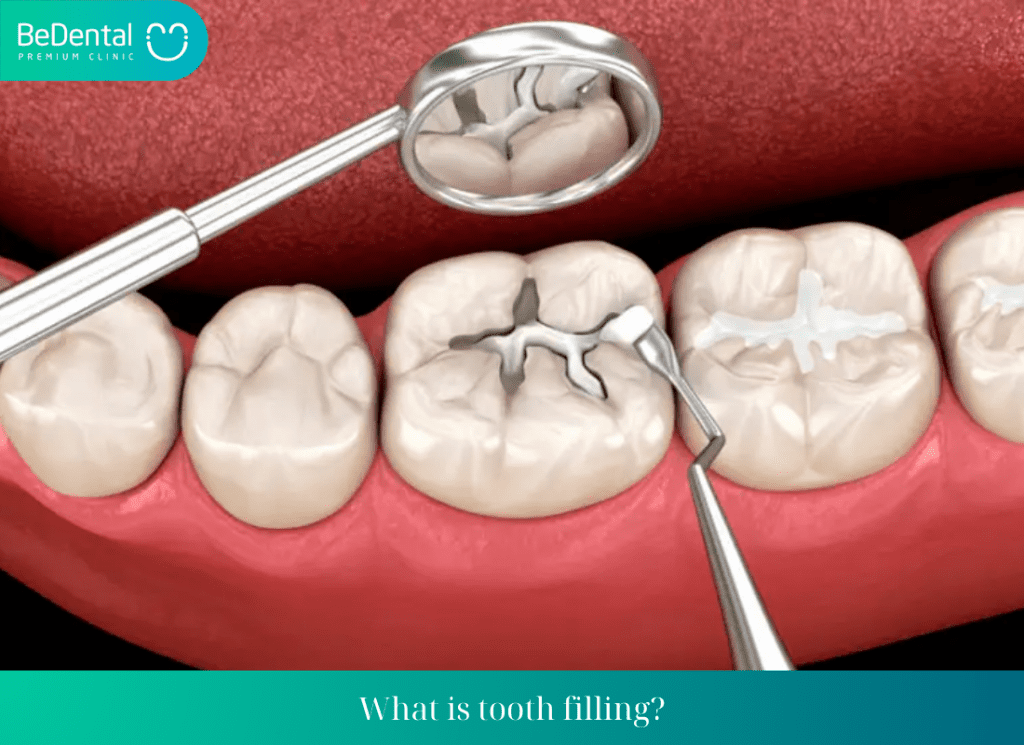
According to current dentists’ recommendations, for effective and safe tooth filling, it is necessary to use the service in the following cases:
- For a dental arch with teeth that have significant damage, such as broken or cracked teeth from chewing or strong impact.
- Your teeth may easily erode from acidic substances or mechanical wear (such as tooth brushing). Or it could be due to excessive force when chewing, leading to tooth erosion.
- For teeth that have been previously decayed or have had pulpitis, causing tissue destruction.
- Teeth that are naturally misaligned, too small, or short from the beginning are also noteworthy cases for tooth filling.
See more: What are the cost of braces?
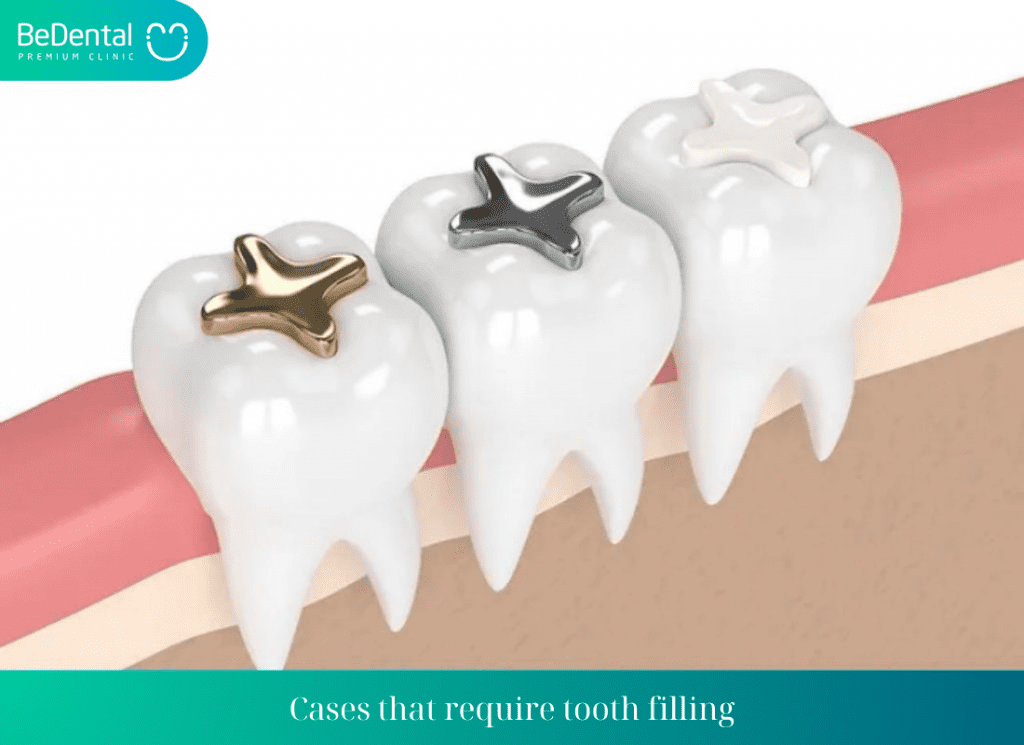
Is filling a cavity durable?
Is filling a cavity durable? This seems to be one of the questions that many customers are concerned about and has not yet been answered.
Is a filled cavity durable? The longevity of a filling depends on many factors and cannot be simply answered with yes or no.
See more: What is orthodontic treatment? Should you get braces?
A quality dental filling service to achieve high durability depends on factors such as: Is the unit you choose for the filling of good quality? The skill level, expertise, and experience of the dentist performing the procedure.
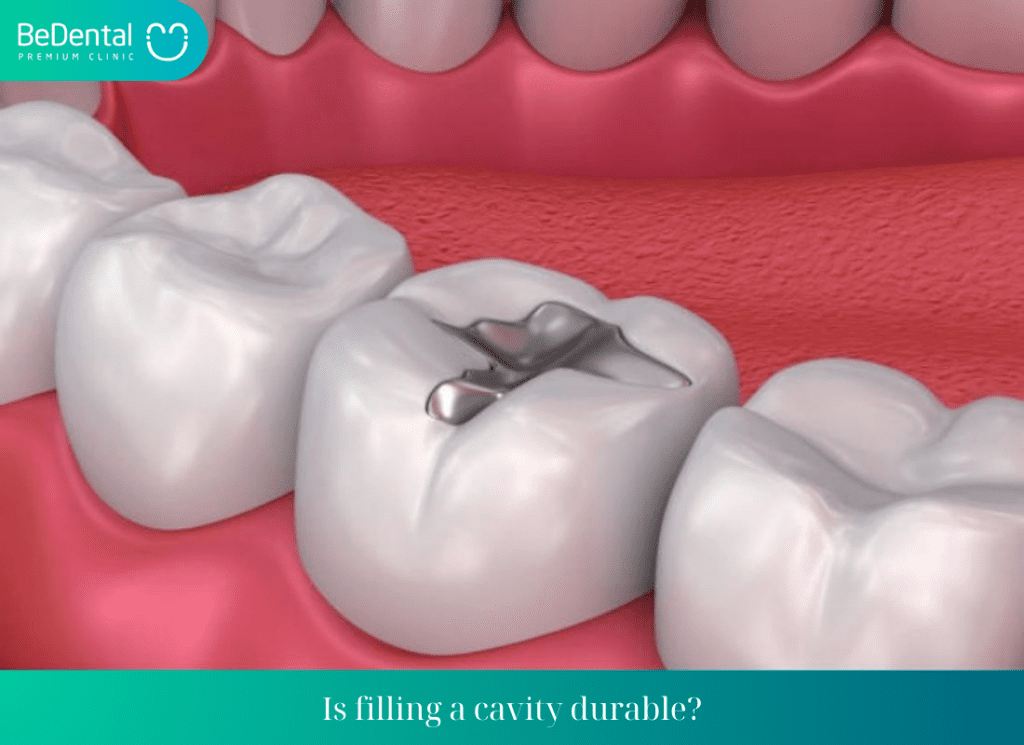
Common types of dental filling materials
The technique of dental filling is currently performed simply, quickly, and without causing pain. There are many types of materials used to perform this technique. However, depending on the condition and individual circumstances, the most suitable material can be chosen. Here are some of the most common types of dental filling materials:
Dental filling with Glass Ionomer Cement (GIC)
Dental filling with GIC is a method that has been used for a long time with many advantages. This material has a color close to natural teeth, is easy to apply, and is popular. GIC is a water-loving material, quick to manipulate, and used for filling in hard-to-isolate areas of the teeth. Furthermore, GIC is also used for filling children’s teeth in cases where the child is uncooperative.
See more: Do porcelain crowns cause gum recession
One of the important advantages of GIC is the release of fluoride, a substance that helps strengthen teeth and prevent cavities. However, this material can be prone to fracture and erosion, as well as having limited color options. It is also difficult to shape the teeth as desired.
Composite Dental Filling: Ingredients, characteristics, and limitations
Composite dental filling is a cosmetic method to repair deep or damaged teeth. Composite is made from resin, has a color similar to natural teeth, thus providing a high aesthetic effect. After filling a tooth with composite, the bond and tooth appear seamless, not visible when communicating or smiling.
Composite has high flexibility, allowing for easy and precise filling. The setting time of composite is also quite long. The cost of dental filling with composite is suitable for everyone.
However, the durability of composite is not as high as porcelain, and its color may change over time. Composite also has a tendency to shrink during the filling process, so after a few years of use, the bond may cause secondary cavities. Re-filling is necessary in this situation.
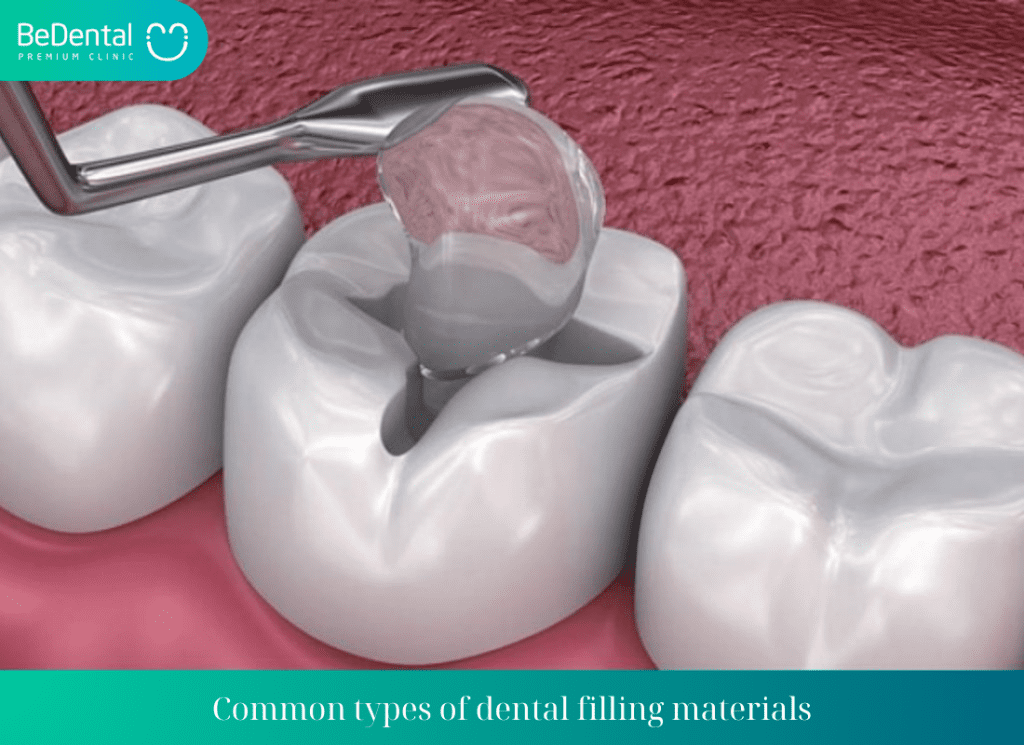
Dental crowns for cosmetic improvement of teeth
Solid porcelain is a type of porcelain with many crystals and is produced from a uniform glass block. The solid porcelain crown procedure is performed by a dentist, using specialized bonding materials to create a complete tooth. The material used for this method is extremely durable, suitable for teeth that need to withstand strong chewing forces. The color of solid porcelain also provides a high level of aesthetics, preventing the recurrence of cavities.
See more: How much does dental filling cost?
Dental filling with Amalgam
Amalgam is a material made from a mixture of metals such as copper, silver, mercury, and zinc. It is commonly used to fill large cavities or teeth responsible for chewing.
However, Amalgam has some disadvantages. One of them is its low aesthetic appeal, so it is often used to fill teeth in less visible areas. Additionally, Amalgam has the ability to conduct heat and electricity, reducing the ability to taste the flavor of food.
Dental filling with metal
During the process of metal dental filling, the material commonly used is Titanium or gold alloy. Both types have good compatibility with teeth and the oral environment. These metal materials also have good strength and wear resistance, making them preferred for filling molars.
Furthermore, the crown is made in a workshop, so it has a particularly tight fit, especially in the case of using gold, to prevent future recurrence of cavities. However, this type of material does not match the color of the teeth, so its aesthetic appeal is not high, and the filling technique is more complex.
Gold filling
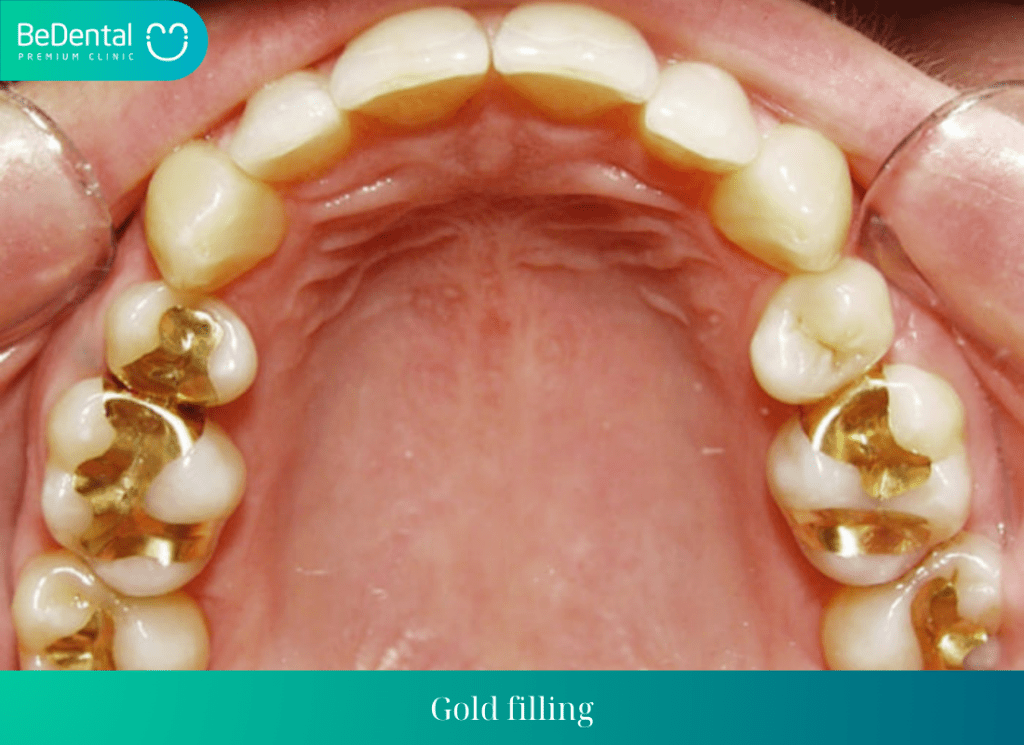
This is one of the materials that many economically privileged customers use. However, in terms of safety for the body, it is not highly regarded by doctors. This material can easily cause irritation to users. Usually, the lifespan of this material is extended for about 10 years, a relatively long period, so you may consider before using it.
The choice of suitable dental filling material depends on the specific case of each individual. If you are concerned about aesthetics, you can choose Composite, a material with a color similar to real teeth and can conceal the flaws of tooth enamel.
In addition, other materials such as silver, Amalgam, and porcelain can also be used for regular dental filling. However, these materials often have low aesthetic appeal, so they are usually used to fill teeth in less visible areas.
See more: What is the appropriate age for braces?
With the information from the article above, Bedental hopes to provide you with valuable and practical information about dental filling services. At the same time, we aim to answer your question: What is dental filling? We hope that you will carefully consider before making a decision on whether or not to use this service.
Most asked questions
How long can dental fillings typically last?
See more: Do i need braces for mild overbite?
Are there any potential health risks associated with certain types of dental filling materials?
Yes, there can be potential health risks associated with certain types of dental filling materials. Here are some considerations for different types of filling materials:
- Amalgam Fillings: Amalgam fillings contain mercury, which has raised concerns about potential health risks. While the American Dental Association and other major health organizations consider dental amalgam to be safe, some individuals may be sensitive to mercury or have concerns about its long-term effects on health.
- Composite Fillings: Composite fillings are generally considered safe and are a popular choice for their aesthetic appeal. However, some individuals may experience allergic reactions to the materials used in composite fillings.
- Gold Fillings: Gold fillings are biocompatible and durable, but some individuals may have metal allergies or sensitivities that could cause reactions.
- Porcelain Fillings: Porcelain fillings are also considered safe and biocompatible. However, some individuals may experience minor sensitivity or irritation after the placement of porcelain fillings.
It is important to discuss any concerns or allergies with your dentist before choosing a dental filling material. Your dentist can provide information on the potential risks and benefits of each type of filling material and help you make an informed decision based on your individual needs and health considerations. Regular dental check-ups and proper oral hygiene can also help monitor the condition of your fillings and address any issues promptly.
Conclusion
In conclusion, the selection of dental filling materials is crucial and should be based on individual needs and preferences. While some materials offer aesthetic benefits, others prioritize durability and safety.
Understanding the characteristics and limitations of each material is essential in making an informed decision. It is important to weigh factors such as aesthetics, longevity, and potential risks when choosing a dental filling material. Ultimately, consulting with a dental professional can help guide individuals towards the most suitable option for their specific dental needs.
Tư vấn chuyên môn bài viết:
BÁC SĨ DƯƠNG THỊ THÙY NGA





